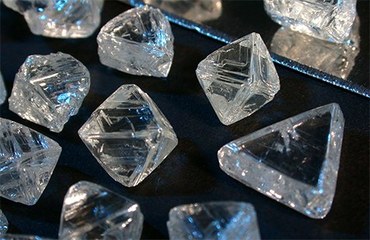São Paulo – Brazil’s first diamond primary deposit began operations last year. Located in Nordestina, Bahia, Braúna 3 could raise tenfold the local production of the stones, which reached 31,800 carats in 2015, according to data by the National Department for Mineral Production (DNPM).
The mine is part of the Braúna complex, managed by Lipari Mineração. It has at least 28 kimberlite pipes, from which 11 are mineralized. Not all of them, however, will be economically viable, as explained by Lys Mattos Cunha, geologist of the Mineral Resources Research Company (CPRM).
“Diamond exploration is very erratic: you could find a kimberlite pipe that pays off your investment, or you could find a volume that doesn’t,” she says.
Nearly all of domestic output is exported: in 2015, 34,100 carats of Brazilian diamonds were shipped to other markets (included in the sum is the remaining stock from the previous year), against a local consumption of only 5,000 carats. The United Arab Emirates are one of main purchases of Brazilian stone, according to Brazil’s Ministry of Mines and Energy.
The Arabs will see a larger supply of local diamonds: Lipari has the capacity to process 2,000 tons of kimberlitic ores (the name given to rocks containing diamonds) per day and, according to Cunha, it’s possible to extract up to 40 carats of diamond per ton of rock.
Braúna 3 is the first Brazilian deposit where diamond in its primary form can be found and is economically viable. In this type of mine, only companies using specific technology are able to extract the diamond from the rock, which explains the lack of a rush of prospectors to the region. They seek diamonds that are already free from the rock in rivers or near them. Since its discovery, the country has been supplying diamonds to other markets but it’s been years since it was the main supplier, being surpassed by Russia, Australia and African countries.
In 2009, after the federal police seized illegal diamonds, the government decided to map out all the diamond sources in the country, setting up a database. “Each diamond has the specific features of the region where it was found,” says Cunha.
Coordinated by CPRM, the research is near conclusion, and it points to the number of 1,100 to 1,500 kimberlitic pipes in the country. Besides Braúna, there’s a potential for extracting primary diamond from the regions of Serra da Canastra, Minas Gerais.
*Translated by Sérgio Kakitani




